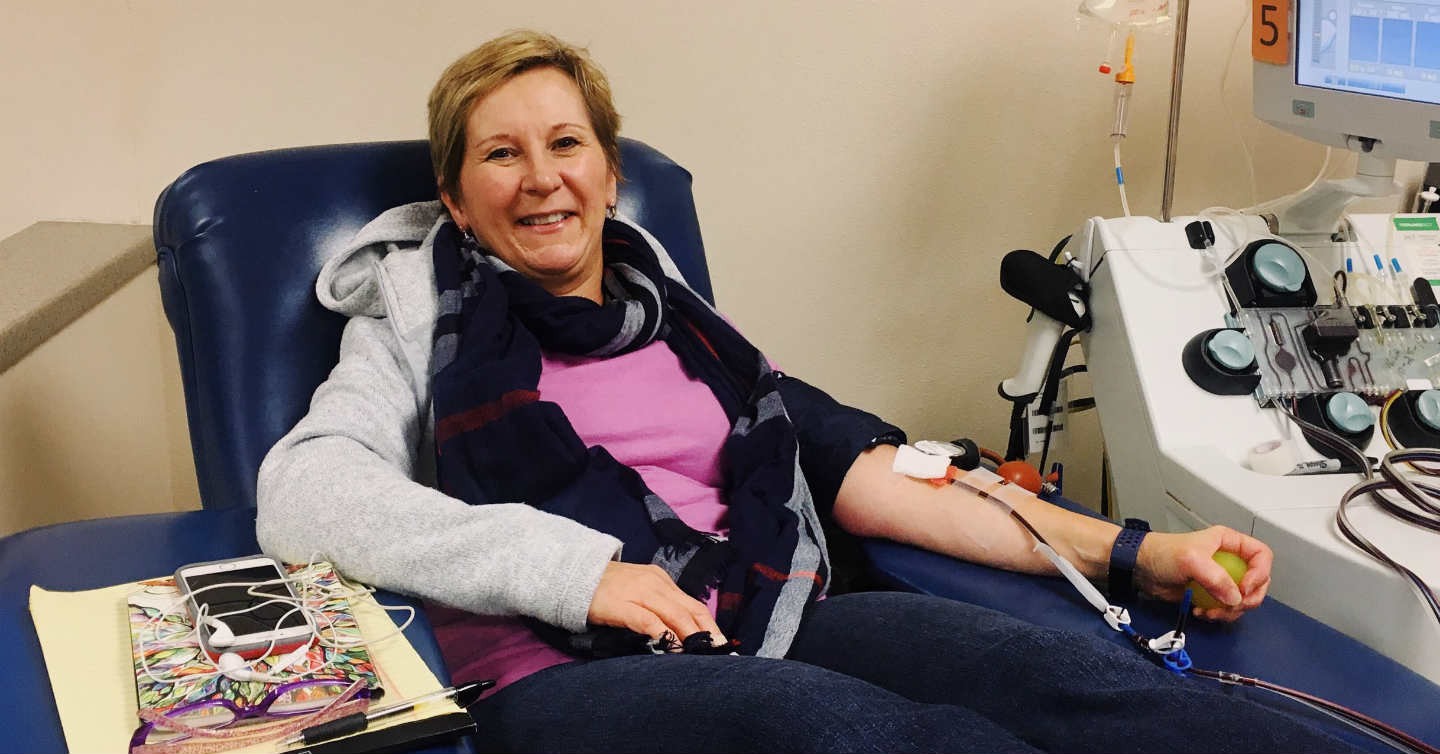How to Save a Life

Does Donating Blood Actually Save Lives?
Nearly 20 years ago, Barb Lehl, a Paralegal at Network Health, walked into a bloodmobile for the first time. She had previously been the recipient of two blood transfusions and knew this was a way for her to pay it forward. A few years later, she watched her mother receive platelets and plasma during her fight with cancer.
“Three times in my immediate family, I saw the gift of blood save lives,” Barb says.
More than 15 million pints of blood are transfused in the U.S. every year, and every two seconds someone in the U.S. needs blood. Unfortunately, there is no substitute for blood and the only way to provide life-saving blood is through donation. Blood is made up of red cells, white cells and platelets, all mixed together and transferred in a liquid known as plasma.
Shortly after Barb started donating blood, she was informed that there was a high demand for her blood type for the plasma and platelet components.
“I learned that AB- blood is the rarest blood type; less than 1 percent of the population has it. As such, my blood donations weren’t needed as the small population of recipients were also eligible to receive blood from donors with other blood types. However, I learned that my plasma is universal and can be used for all patients,” Barb says.
What is donated blood used for?
All parts of the blood can be donated and are used in medical situations to keep patients alive. For example, heart surgery takes six units of blood and six units of platelets. An organ transplant typically uses 40 units of blood, 30 units of platelets and 25 units of plasma.
As a donor, you can choose to donate your whole blood or donate specific components such as platelets and plasma like Barb, through a process called apheresis. Apheresis is where the blood goes through a special machine to separate it during the donation, so only certain parts of the blood are collected.
“The process of donating plasma and platelets takes a little longer than donating blood, but it’s a millisecond of my time in comparison to the extra time a cancer patient gets with his or her family or the lifetime a newborn shares with his mother,” Barb says.
To date, Barb has donated 55 units of platelets and plasma. She encourages people to consider contacting the Community Blood Center to find out how they can get started and which type of donation would be best for them.



